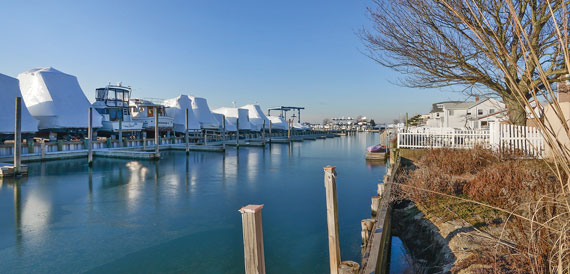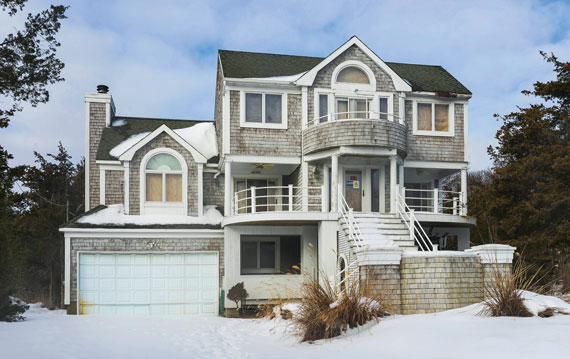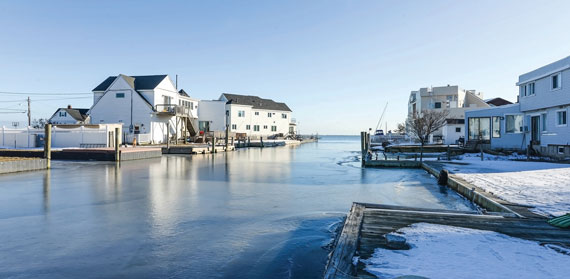Trending
Homes hit hard by Sandy are getting more mileage
There is ongoing demand for storm-damaged properties on LI

Despite the flood danger to houses near Long Island’s northern and southern shores, properties severely damaged by recent storms continue to get snatched up by families looking for new homes, developers seeking land and investors looking to grow their money.
Hurricane Irene and Tropical Storm Lee, which both hit Long Island and other regions in 2011, and Superstorm Sandy, which devastated numerous cities along the East Coast in 2012, all left hundreds of badly damaged homes in Nassau and Suffolk counties.
In their respective wakes, the storms destroyed summer getaways, investment properties and single-family houses alike. Innumerable personal items were lost and hundreds of millions of dollars were washed away.
To aid ongoing efforts to rebuild and reinvest, New York State formed the Governor’s Office of Storm Recovery and bought hundreds of properties, as well as pieces of land, which a Long Island real estate company began to sell at auction in 2015.
Misha Haghani, a Wall Street-trained real estate lawyer and owner of Paramount Realty USA, submitted and won a state request-for-proposal competition and has since sold hundreds of the properties that were bought by the state.
“The demand is strong,” he said. “We’re talking about Long Island property after all. We definitely had more investors for property that needed work. These included developers, builders and contractors who were mostly looking at it as an investment.”
In May 2015, buyers picked up 81 homes at an auction in Hauppauge in the first three hours, Newsday reported at the time. That auction kicked off with a winning bid of $535,000 for a nearly 10,000-square-foot property in Bellmore and wrapped up with a $19,000 bid for a house in East Rockaway, according to the local newspaper.
“There is no question Long Island is a place people want to live,” Haghani told The Real Deal. “Most of the people we’ve spoken with still want to live here.”
The 36-year-old North Shore native said the initiative has helped Long Island’s economy recover and rebuild, while allowing individual homeowners to recoup some of their losses.

14 Beach Plum Lane in Saint James
To qualify for the state buyback, properties must have been primary residences, substantially damaged by one of the storms and have lost more than 50 percent of their value. After the state bought the damaged properties, primarily located on the South Shore, Paramount Realty then held auctions in 2015 to sell them to eager buyers looking for bargains.
To participate in the process, prospective buyers are required to register and bring to the auctions a certified or cashier’s check for $25,000.
At the first two auctions held in Long Island, roughly 300 properties spread throughout 30 towns were sold for a total of $46 million, according to the broker. Another auction will be held this spring, he said, though it is not yet clear how many properties will be for up sale.
“To our knowledge that represents the largest sale of Long Island property not in a foreclosure context,” Haghani said. At both auctions, “there were 1,500 bidders, which is insane,” he noted.
Still, not everyone is covered by the initiative. Properties that are only used seasonally or as vacation homes and investments were not bought back by the state. Many such houses are located on Long Island’s East End, and while pricier areas like the Hamptons have experienced less widespread damage from storms, Corcoran Real Estate broker Gary DePersia said that homeowners in those areas think about such an occurrence.
So far, the majority of owners in those towns and villages (mostly second-home owners) have been able to rebuild or hold onto their properties, even with the added risks of damage from future storms and increased insurance costs, he noted.
“Oceanfront is the most finite property we have,” DePersia said. “It may be a little harder, but it’s viable. The high-end market remains strong. People think about storms and get insurance and follow FEMA laws for oceanfront, but it doesn’t deter buying.” DePersia said he recently closed two sales on such properties for a combined value of about $100 million.
Other sellers on the Island have been less fortunate. For the most severely damaged homes that are covered by the state auction program, some owners have lost hundreds of thousands of dollars, if not more.
The waterfront home in Bellmore that sold last May, which was valued at $775,000 pre-storm, received a minimum bid of $287,300 before selling for nearly twice as much, one source familiar with the property said on the condition of anonymity. The four-bedroom, three-bath house is currently valued at $567,624, according to Realtor.com.

137 Sequams Lane West in West Islip
While the auction prices might appear alluring to prospective investors, one repeat buyer, Scott McManus, who purchased 10 homes at the two auctions in 2015, said that buying and repairing the homes to either live in, sell or rent has not been easy.
Regulations must be met, plans for repairing the damaged homes have to be approved by municipalities and raising almost every property in accordance with town Base Flood Elevation (BFE) standards has forced McManus to incur costs and lose valuable time, he said.
“Nine out of 10 times it means getting them lifted,” he said. “Until I get them lifted, I’m worried about if a storm comes in.”
Depending on the location, the rules change, McManus added. “There are all different regulations for plans, BFEs, repairs and renovations, and to get the plans through to get approved can be hard depending on the township,” he said.
McManus is now revitalizing about a dozen properties that he will eventually sell or rent. The Long Island resident, who has transitioned from dabbling in buying and selling properties to become a real estate investor and developer by trade, said he sees the potential danger of buyers getting lured into thinking an impossible-to-pass-up deal is in front of them. But with repair costs and bureaucratic regulations, it’s just not that simple, he noted.
“Buying at the auction means it’s going to be a longer and more expensive process,” McManus said. “It’s a much slower process than a regular process would be because it is government owned.”
He said he also worries about losses while the properties remain on the market. Before a home can be sold or rented, the owner must clear town requirements for a certificate of occupancy, which can vary from town to town and even at various locations within towns.
McManus said that most of the houses he acquired would ultimately cost more to repair than to buy at auction.
“I thought I could fix them for less than I bought,” he said. “I got hurt. It’s a mess. If you don’t know, you could be in for a world of hurt. At these auctions a lot of people get into stuff they don’t know.”
Correction: A previous version of this article stated that the auctions began in 2014 and that roughly 300 properties were sold at each auction. The auctions began in 2015 and roughly 300 properties were sold in total at both.




